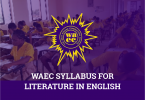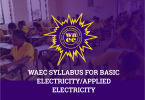Preparing for the WAEC Arabic exam requires a structured and consistent study plan. Start by familiarizing yourself with the WAEC Syllabus for Arabic, which outlines the key topics and objectives you need to master. Focus on understanding Arabic grammar, vocabulary, and comprehension skills. Regular practice with past questions can help you become comfortable with the exam format and time management.
In addition to the syllabus, make use of the recommended textbooks and resources provided by WAEC. These materials are specifically designed to align with the exam content and can offer valuable insights into the types of questions you may encounter. Remember, consistent practice and seeking help when needed are key strategies for success in the WAEC Arabic exam.
Goals of the WAEC Arabic Exam
The Arabic exam is not just about knowing how to speak or write, but about using the language meaningfully. Here is what WAEC wants you to gain from studying Arabic:
- Learn to read, write, and understand Arabic confidently.
- Get exposed to Arabic literature and Islamic texts, both classical and modern.
- Be ready for higher education in Arabic or related fields.
- Develop the ability to communicate effectively in Arabic, both in speech and writing.
Structure of the WAEC and GCE Arabic Exam 2025
The exam is made up of two main papers that test different skills:
Paper 1 – Objective Questions
- What it covers: Grammar rules, vocabulary, sentence formation, reading comprehension, and basic translation.
- Format: 50 multiple-choice questions.
- Time: 1 hour.
- Total marks: 50.
Paper 2 – Theory and Essay Writing
- What it covers: Essay writing, grammar application, translation (Arabic ↔ English), and literature analysis.
- Time: 2 hours.
- Total marks: 100.
Comprehensive Outline of WAEC Syllabus for Arabic
The WAEC syllabus for Arabic generally aims to provide a foundational understanding suitable for secondary school leavers.
Here is the structured outline of the WAEC Syllabus for Arabic:
Reading Comprehension
- Understanding passages from modern and classical Arabic
- Answering questions based on the text
- Drawing inferences and main ideas
Arabic Grammar (Nahw and Sarf)
- Verb conjugation and noun-adjective agreement
- Tenses, plurals, dual forms, and pronouns
- Sentence construction and structure
Composition & Essay Writing
- Formal and informal letters
- Narrative, descriptive, and argumentative essays
- Picture-based composition
Arabic-English & English-Arabic Translation
- Focus on correct usage, idiomatic expressions, and context
- Avoiding literal translation errors
Arabic Literature
- Classical and modern prose and poetry
- Authors, themes, literary devices
- Interpretation and appreciation
Islamic Texts (For candidates taking Arabic for religious purposes)
- Selected verses from the Qur’an and Hadith
- Understanding religious vocabulary and context
Scheme of Examination
The WAEC Arabic examination typically consists of multiple papers, including:
- Paper 1: Oral Arabic (Testing listening comprehension and speaking ability, often through picture description, role-play, or reading aloud). This section may not be explicitly detailed in all publicly available syllabus outlines, but it is a standard component.
- Paper 2: Essay, Comprehension, Translation, and Lexis & Structure (Written paper covering grammar, vocabulary, comprehension, translation, and composition).
- Paper 3: Literature (Focusing on prescribed literary texts).
Recommended WAEC Textbooks for Arabic
Grammar and Composition
- “النحو الواضح” (Al-Nahw al-Wadih) by Ali Al-Jarim and Mustafa Amin. A foundational text covering Arabic grammar rules, suitable for beginners and intermediate learners.
- “متن الأجرومية” (Matn al-Ajurumiyyah) by Muhammad ibn Da’ud al-Sanhaji. A concise treatise on Arabic grammar, widely used in traditional Arabic studies.
- “المرشد في الإنشاء العربي والكتابة” (Al-Murshid fi al-Insha’ al-Arabi wa al-Kitaba) by Sayyid Hamza Malik. Focuses on Arabic composition and writing skills, aiding students in developing coherent essays and narratives.
- “A Guide to Arabic Composition” by S.H.A. Malik. Provides structured guidance on writing in Arabic, covering various composition styles.
- “A New Arabic Grammar of the Written Language” by J.A. Haywood and H.M. Nahmad. An extensive grammar resource that delves into the intricacies of written Arab. ic.
Comprehension, Translation, and Orals
- “العربية الجديدة في نيجيريا” (Al-Arabiyya al-Jadida fi Nigeria) by Muhammad Badi’ Sharif, Salim Hakim, and Alhaji Hussein Adam. A modern Arabic textbook tailored to the Nigerian. context, enhancing comprehension and translation skills.
- “Learning Arabic Language” by A.L.A. Adekilekun. A beginner-friendly resource for acquiring foundational Arabic language skills.
- “A Modern Arabic Course Book 1” by I.A.B. Balogun and Z.I. Oseni. Introduces learners to modern Arabic usage, emphasizing practical language application
- Arabic newspapers, magazines, and journals. Regular reading of contemporary Arabic publications to enhance language proficiency and cultural understanding.
Arabic Literature
- “المفصل في تاريخ الأدب العربي” (Al-Mufassal fi Tarikh al-Adab al-Arabi) by Ahmad al-Iskandari and others. A comprehensive history of Arabic literature, covering various periods and genres.
- “المدخل إلى الأدب العربي” (Al-Madkhal ila al-Adab al-Arabi) by Zakariya Hussein. An introductory text exploring the fundamentals of Arabic literature.
- “تزيين الورقات” (Tazyeen al-Waraqaat) by Abdullah ibn Muhammad ibn Fudi. A classical work reflecting traditional Arabic literary styles.
- “المستقبل للغة العربية في نيجيريا” (Al-Mustaqbal li al-Lugha al-Arabiyya fi Nigeria) by Murtada Baramadi. Discusses the future and development of the Arabic language in Nigeria.
We hope this article has been of great help to you. Let us know your thoughts in the comment section below.







Leave a Comment